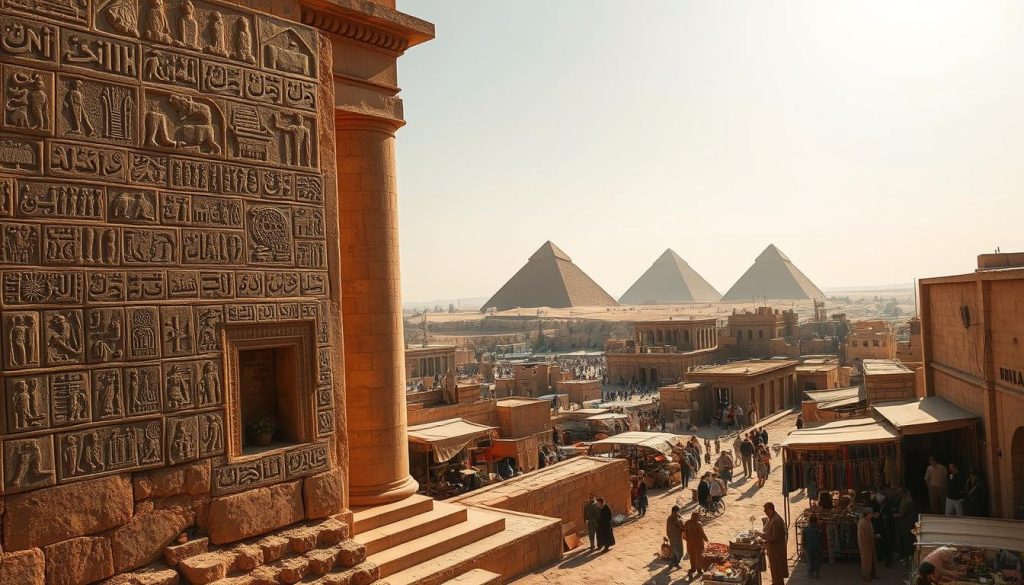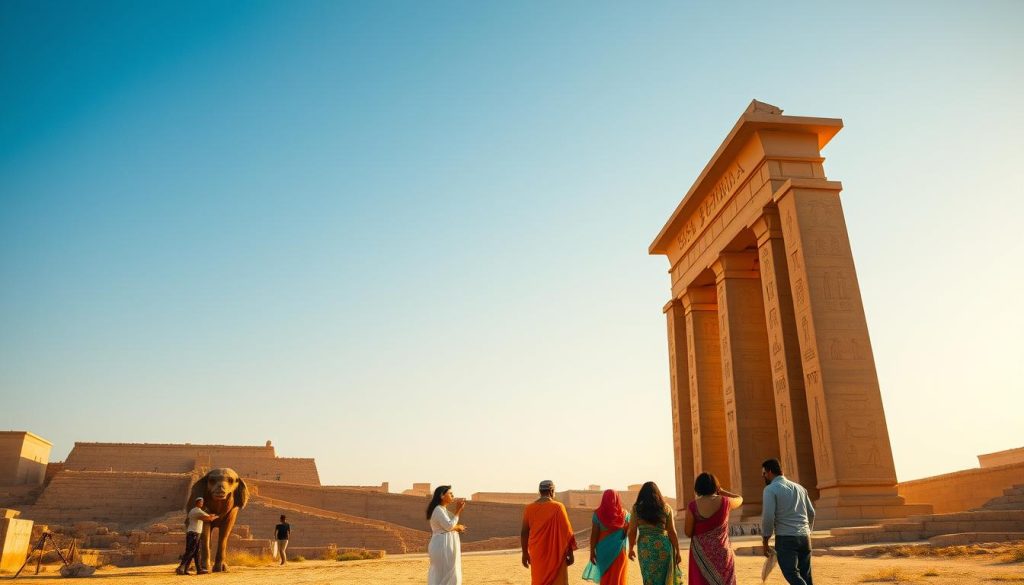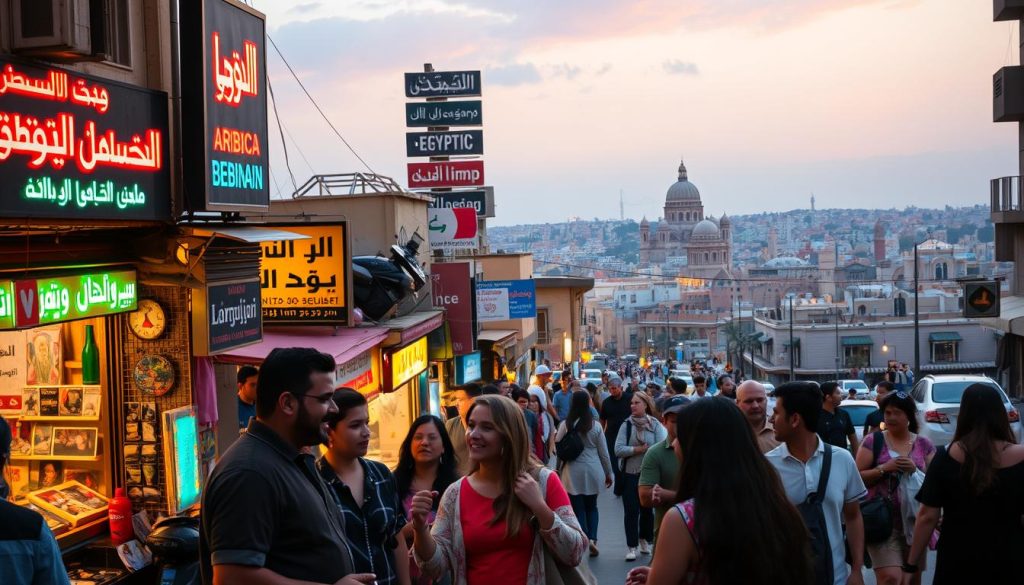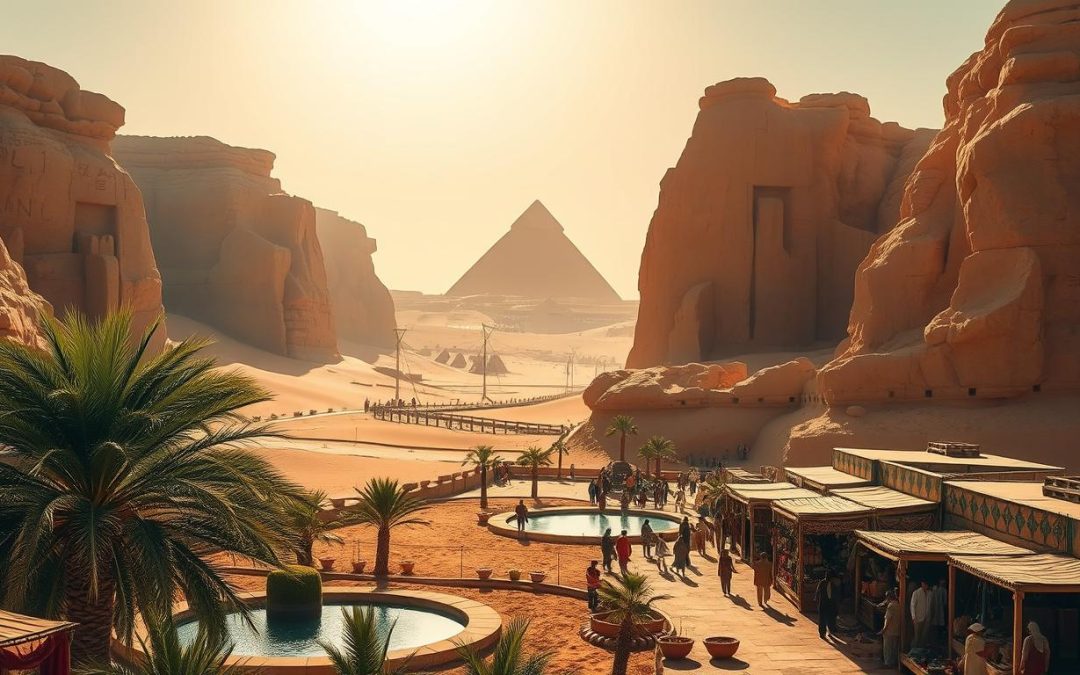Have you ever wondered how a country’s language can tell the story of its history, culture, and identity? In Egypt, the answer lies in a fascinating blend of ancient roots and modern influences. The linguistic landscape here is as diverse as its rich heritage, shaped by centuries of evolution and interaction.
Modern Standard Arabic serves as the formal tongue, used in education, media, and official settings. However, it’s Egyptian Arabic that truly dominates everyday life, connecting people across the nation. This dialect is a testament to the country’s ability to adapt while preserving its unique character.
From the echoes of Ancient Egyptian to the influences of Coptic and immigrant tongues, the languages here reflect a vibrant cultural tapestry. Join us as we explore how these elements come together to create a linguistic identity that’s truly one of a kind.
Key Takeaways
- Modern Standard Arabic is the formal language used in official contexts.
- Egyptian Arabic is the most commonly spoken dialect in daily life.
- Ancient Egyptian and Coptic have left lasting influences on the language.
- Immigrant and colonial encounters have enriched the linguistic landscape.
- The blend of ancient and modern elements creates a unique cultural identity.
Overview of Egypt’s Linguistic Heritage
Every word spoken today has roots that stretch back centuries. The language of this region is a living testament to its rich history. From ancient scripts to modern dialects, the evolution of communication here is a fascinating journey.

Historical Influences from Ancient Civilizations
The ancient Egyptian script, one of the world’s first written systems, laid the foundation. Hieroglyphs, hieratic, and demotic scripts were used for thousands of years. These forms of writing were not just tools for communication but also symbols of cultural identity.
Later, the Coptic language emerged, blending elements of the ancient tongue with Greek influences. It became a liturgical language for the Coptic Orthodox Church, preserving a connection to the past. This blend of cultures created a unique linguistic tapestry.
The Evolution from Ancient Egyptian to Modern Dialects
Over time, the language evolved, influenced by Greek, Roman, and Arab conquests. The Arab conquest in the 7th century introduced Arabic, which gradually became dominant. Today, Modern Standard Arabic is the formal tongue, while Egyptian Arabic is the everyday dialect.
This transformation highlights the adaptability of the Egyptian language. From ancient scripts to modern speech, the journey reflects a blend of tradition and change.
| Period | Language | Influence |
|---|---|---|
| Ancient Times | Hieroglyphs, Hieratic, Demotic | Foundational scripts |
| Roman Era | Coptic | Liturgical and cultural |
| Arab Conquest | Arabic | Dominant modern language |
The blend of historical influences has created a complex yet vibrant linguistic heritage. Understanding this evolution helps you appreciate the depth of the language spoken today.
Egypt: Official and widely spoken languages
The way people communicate reflects their culture and history. In this region, two forms of Arabic dominate: Modern Standard Arabic and Egyptian Arabic. Each plays a unique role in shaping daily life and cultural identity.

Modern Standard Arabic: The Official Language
Modern Standard Arabic is the formal language used in government, education, and media. It traces its roots back to Classical Arabic, with grammar and syntax that have remained largely unchanged since the 7th century. This makes it a unifying force across the Arab world.
While it’s not commonly spoken in everyday conversations, it’s essential for reading, writing, and formal communication. Its stability ensures that it remains a cornerstone of the region’s linguistic identity.
Egyptian Arabic: The De Facto National Tongue
In contrast, Egyptian Arabic is the dialect you’ll hear most often. Spoken by around 68% of the population, it’s a vibrant mix of influences from Coptic, Turkish, French, and Italian. This blend gives it a unique flavor that’s deeply rooted in the region’s history.
It’s the language of daily life, used in films, advertising, and literature. Its widespread use has made it a cultural export, influencing other Arab-speaking regions through media and entertainment.
- Originates from Classical Arabic but enriched by local and foreign influences.
- Dominates informal communication, from markets to homes.
- Plays a key role in shaping regional media and pop culture.
Together, these two forms of Arabic create a dynamic linguistic landscape. They reflect a balance between tradition and modernity, offering a glimpse into the region’s rich heritage.
Minority and Immigrant Languages: A Diverse Soundscape
The soundscape of a region often reveals its cultural depth and diversity. Beyond the dominant forms of Arabic, this area is home to a rich tapestry of minority and immigrant tongues. These languages add unique flavors to the cultural mosaic, reflecting centuries of interaction and adaptation.

Regional Dialects and Minority Tongues
In rural areas, you’ll find a variety of regional dialects and minority languages. Sa’idi Arabic, spoken in Upper Egypt, has distinct phonetic and grammatical features. Nubian, particularly Nobiin, is another key language, preserving the heritage of the Nubian people.
Other minority tongues include Siwi, a Berber dialect spoken in the Siwa Oasis, and Beja, used by the Beja people in the eastern desert. Domari, the language of the Dom community, also plays a role in local communication. These languages are vital for cultural expression and identity.
Foreign Language Influences and Their Cultural Impact
Urban centers showcase the influence of immigrant languages. English and French are widely used in education and business, reflecting historical ties and globalization. Greek and Italian, brought by immigrant communities, have also left their mark on the language landscape.
These languages coexist with mainstream forms, enriching the cultural fabric. They shape urban communication, media, and even culinary traditions, creating a dynamic and evolving soundscape.
| Language | Region | Speaker Percentage |
|---|---|---|
| Sa’idi Arabic | Upper Egypt | ~20% |
| Nobiin (Nubian) | Nubian Regions | ~1.5% |
| Siwi | Siwa Oasis | ~0.5% |
| Beja | Eastern Desert | ~0.3% |
| Domari | Dom Communities | ~0.2% |
These minority and immigrant languages are more than just means of communication. They are living testaments to the region’s history, diversity, and resilience. Their presence ensures that the cultural soundscape remains vibrant and multifaceted.
Conclusion
The language of this region tells a story of resilience and adaptation. From the formal tones of Modern Standard Arabic to the vibrant rhythms of Egyptian Arabic, each dialect reflects a unique cultural identity. These forms of communication bridge the past and present, offering a glimpse into a rich heritage.
Minority and immigrant tongues further enrich this linguistic tapestry. Whether it’s the ancient echoes of Coptic or the modern influences of English and French, these languages add depth to the cultural landscape. They remind us of the region’s ability to embrace diversity while staying rooted in tradition.
Understanding this evolving language helps you appreciate its role in shaping identity. It’s a vibrant mix of history, culture, and modern influences, creating a soundscape that’s truly one of a kind.
The above is subject to change.
Check back often to TRAVEL.COM for the latest travel tips and deals.
Here are some Tours & Sightseeing suggestions that might pique your interests!
